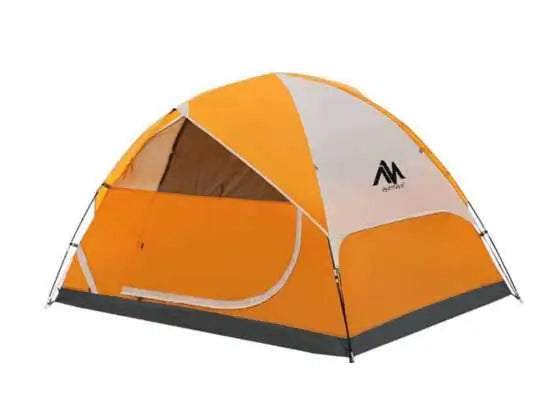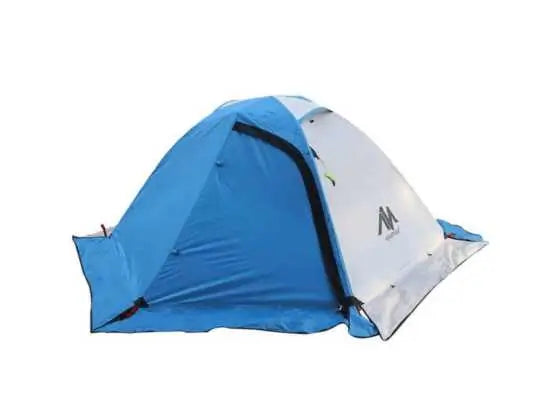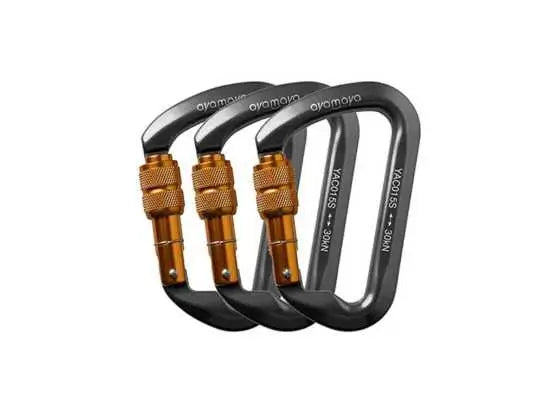Introduction
Camping in the Swiss Alps offers a unique blend of experiences, from secluded wild camping spots to fully-equipped campsites. It's not just the variety of camping options that make this region special, but also its position among some of the world's most stunning hikes. Whether you're exploring remote areas through boondocking or enjoying the amenities of established sites, the Swiss Alps serve as a gateway to breathtaking landscapes and outdoor adventures. Beginners can find guides to navigate wild camping responsibly, enjoying the serenity of the mountains. With both tent camping and luxury options, Switzerland's campsites are perfect for hikers looking to experience the beauty of alpine trails. This guide aims to provide practical advice for an authentic camping experience in the Swiss Alps, emphasizing the importance of respecting nature while enjoying its magnificent hikes.

Best Months to Camp in the Swiss Alps
Seasonal Climate and Its Impact On Camping
The Swiss Alps experience a varied climate throughout the year. Winters are cold and snowy, making it perfect for winter sports but challenging for camping, especially wild camping or boondocking. Spring brings melting snow, blooming flora, and cooler temperatures, ideal for those looking to enjoy the scenic beauty without the summer crowds. Summer offers warm weather and the best conditions for hiking, making it the peak season for camping. However, this is also when campsites are busiest. Autumn sees cooler temperatures and fewer crowds, with the landscape turning into a vibrant display of colors, offering a tranquil setting for camping before the winter sets in.
Recommended Months for Camping
For the best camping experience, focusing on weather, scenery, and available activities, the months from June to September are highly recommended. During this time, you can enjoy the best of Swiss camping, from tent camping in Switzerland's mountains to exploring dispersed camping sites. The weather is conducive to outdoor activities, with long daylight hours allowing for extended hikes on some of the world's most beautiful trails. This period also coincides with the best conditions for boondocking or dry camping, where you can find secluded spots to enjoy the Alps' natural beauty. To avoid the largest crowds while still enjoying some warmer weather, shoot for mid-September.
For those interested in wild camping or using a 2-man tent for a more intimate connection with nature, it's crucial to be prepared for temperature variations, even in summer. The nights can be cool, and weather conditions can change rapidly in the mountains.
Top 6 Swiss Alps Destinations for Hiking and Camping Enthusiasts

- Lauterbrunnen: Nestled in the heart of the Jungfrau region, is often hailed as a jewel among the Swiss Alps' camping destinations. Renowned for its stunning landscapes that look straight out of a storybook, Lauterbrunnen offers a mix of serene beauty and adventurous trails. The valley is famous for its 72 thundering waterfalls, sheer cliff faces, and the quaint, picturesque village that lies at its heart. Hiking paths here cater to all levels, leading through lush meadows, alongside cascading waterfalls, and up to breathtaking viewpoints overlooking the valley. One of the most celebrated trails starts right from the Lauterbrunnen train station and guides you through a landscape dotted with waterfalls, rivers, and traditional alpine meadows, eventually winding up in the charming mountain village of Gimmelwald. For those seeking both the tranquility of nature and the thrill of exploration, Lauterbrunnen serves as the perfect basecamp to explore the wider Jungfrau region, offering a blend of natural wonders and easily accessible hiking routes that promise an unforgettable outdoor experience
- Valais: Known for its majestic mountains, Valais is a hiker's paradise, offering trails through alpine networks of valleys and beautiful, less-visited areas. It's ideal for those looking to explore the high Alps and enjoy scenic hut-to-hut hikes.

- Zermatt and the Matterhorn: The iconic Matterhorn and its surrounding area, including the Höhbalmen Alpine Meadows, offer some of the most dramatic landscapes in Switzerland. The hikes here can be challenging but reward you with unparalleled views of the Valais Alps and the famous north face of the Matterhorn.
- Uri Alps and Mount Titlis: For a more approachable hiking experience, the Uri Alps (technically the Western Alps), including Mount Titlis, provide a range of trails from easy walks to advanced hikes. The area is known for its beautiful alpine flowers and meadows, making it a fantastic option for those seeking a less daunting but equally rewarding experience.
- Parc Ela, Graubünden: As the largest nature park in Switzerland, Parc Ela in the canton of Graubünden offers a vast expanse of untouched nature. The trails here, such as the Hängebrücke Val Meltger, feature beautiful forests, alpine huts, and stunning views of the Engadin Alpine valley region. It's a perfect spot for those seeking serenity and natural beauty on their hikes.
- Oeschinensee, Bernese Oberland: Lastly, the Oeschinensee Panorama Hike in the Bernese Oberland is an exceptional choice for hikers looking to explore the area around one of the most beautiful lakes in the Swiss Alps. The trail offers a mix of steep ascents, flat meadows, and stunning lakeside views, complete with opportunities to spot local wildlife and enjoy the tranquil beauty of the Alpine landscape.

Swiss Camping Laws: Permits & Restrictions
In Switzerland, camping regulations can vary significantly between cantons and municipalities, making it important to research local laws before setting up camp. Generally, wild camping or boondocking is restricted in many areas, especially in national parks, nature reserves, and near bodies of water. Some regions may allow dispersed camping in designated areas or above certain altitudes, but it's essential to check specific rules beforehand.
Permits are not typically required for camping in official campsites, but wild camping may require authorization from local authorities or landowners. Always seek permission if you're unsure about the legality of a camping spot.
- Campfires: Campfire regulations are another critical aspect of camping in Switzerland. Due to the risk of forest fires, making open fires is often prohibited outside designated fire pits or areas, particularly during dry seasons. Always check local restrictions and weather conditions. If campfires are allowed, use existing fire pits to minimize your impact and ensure the fire is completely extinguished before leaving.
- Waste Disposal: Responsible waste disposal is a cornerstone of camping etiquette in Switzerland. Campers are expected to follow the "Leave No Trace" principles, packing out all trash and recycling where facilities are available. In more remote or wild camping areas, be prepared to carry waste until it can be properly disposed of. This practice helps protect Switzerland's pristine natural environment for future visitors.
- Wildlife Interaction: Interacting with Switzerland's wildlife requires respect and caution. Feeding or approaching wildlife is discouraged to preserve natural behaviors and ecosystems. Be particularly mindful in areas inhabited by protected species, and store food securely to avoid attracting animals to your campsite.
By adhering to these local camping laws and regulations, campers can enjoy Switzerland's breathtaking outdoor settings responsibly. Always aim to leave the environment as you found it, ensuring that the natural beauty of Switzerland remains intact for generations to come. For the most current and detailed information, visiting official cantonal websites or contacting local tourist offices is recommended.

Essential Swiss Camping and Hiking Terms:
When visiting Switzerland for the first time, especially with plans to camp and hike, knowing certain terms and concepts can significantly enhance your experience. Here's a list of helpful terms and explanations to get acquainted with.
- Canton: Switzerland is divided into 26 cantons, each with its own set of laws and regulations, including those related to camping and hiking. Understanding the canton you're in will help you follow local guidelines accurately.
- Wild Camping: Refers to camping outside of designated campsites. While it's restricted in many parts of Switzerland, there are exceptions based on altitude and location. Knowing the specific canton rules is crucial.
- Bivouacking: Similar to wild camping but generally refers to setting up a temporary camp without a tent (using a bivouac sack or similar). Allowed in certain areas for one night, it's often subject to more lenient regulations than tent camping.
- Wanderweg: This term refers to walking or hiking paths. Switzerland boasts a comprehensive network of Wanderwegs, meticulously marked and maintained, leading through some of the country's most stunning landscapes.
- Bergweg: These are mountain trails, typically more challenging than Wanderwegs. Bergwegs are marked with white-red-white signs and require good hiking equipment and experience.
- SAC Huts: Operated by the Swiss Alpine Club (SAC), these mountain huts provide accommodation and meals for hikers and climbers in the Alps. Staying in an SAC hut can be a highlight of hiking in Switzerland, offering a chance to meet fellow hikers and enjoy the alpine ambiance.
- T1 to T6: A classification system used by the Swiss Alpine Club to rate the difficulty of trails. T1 is the easiest, indicating a well-marked and straightforward path, while T6 represents the most challenging, often requiring climbing skills and specialized equipment.
- Schweizer Familie Fire Pits: Throughout Switzerland, there are designated fire pits (Feuerstelle) maintained by the magazine "Schweizer Familie," where you can safely make a fire. These are often located in picturesque spots and are equipped with wood and grill grates.
- SBB: The Swiss Federal Railways (Schweizerische Bundesbahnen) is the main national railway company. Understanding the SBB schedule and offerings can help you navigate the country efficiently, as many hiking trails and camping sites are easily accessible by public transport.
- Halbtax/Abo: A half-fare travel card that offers a 50% discount on public transportation in Switzerland. For visitors planning extensive travel by train, bus, or boat, this card can offer significant savings.
Familiarizing yourself with these terms will not only help you navigate the practical aspects of camping and hiking in Switzerland but also enrich your understanding and appreciation of the Swiss outdoor culture and infrastructure.
Last Thoughts
Exploring the Swiss Alps offers both challenges and serenity, from iconic peaks to tranquil valleys. This guide has navigated through optimal travel times, premier destinations, and key regulations to help you prepare for an authentic experience. Emphasizing respect for nature and readiness for the outdoors, it's clear that a successful trip requires more than just physical preparedness; it demands an understanding of the local environment and its preservation. As you embark on your Swiss adventure, remember that the beauty of the Alps is matched by the responsibility we hold as visitors to maintain its splendor. Let's keep our impact minimal and our spirits high as we explore one of the world's most extraordinary landscapes.
Additional Resources
For further exploration and detailed planning of your journey, explore these additional resources:
- www.myswitzerland.com: The official website of Switzerland Tourism, the national tourism organization. It serves as a comprehensive guide for travelers interested in visiting Switzerland, offering information on a wide range of topics including destinations, activities, accommodation, events, and practical travel advice.
- Camping.info: A comprehensive directory of campsites across Switzerland, offering detailed information about each site, including amenities, prices, and suitability for different types of travelers. It's an excellent resource for finding the perfect campsite in the Swiss Alps.
- MySwissAlps.com (Wild camping rules): Offers detailed guidelines on where wild camping is permitted in Switzerland, emphasizing the importance of respecting nature and wildlife. The site also provides links to other websites of interest for further reading on wild camping, conservation area regulations, and Swiss conservation areas.
- TCS.ch: The website for the Touring Club Switzerland, is a vital resource for campers planning an adventure in the Swiss Alps. TCS is known for offering a wealth of information on camping and traveling within Switzerland. The site provides guides on the best camping practices, detailed directories of camping sites (including TCS-certified campsites), and practical advice on navigating Swiss roads with caravans and campers.









